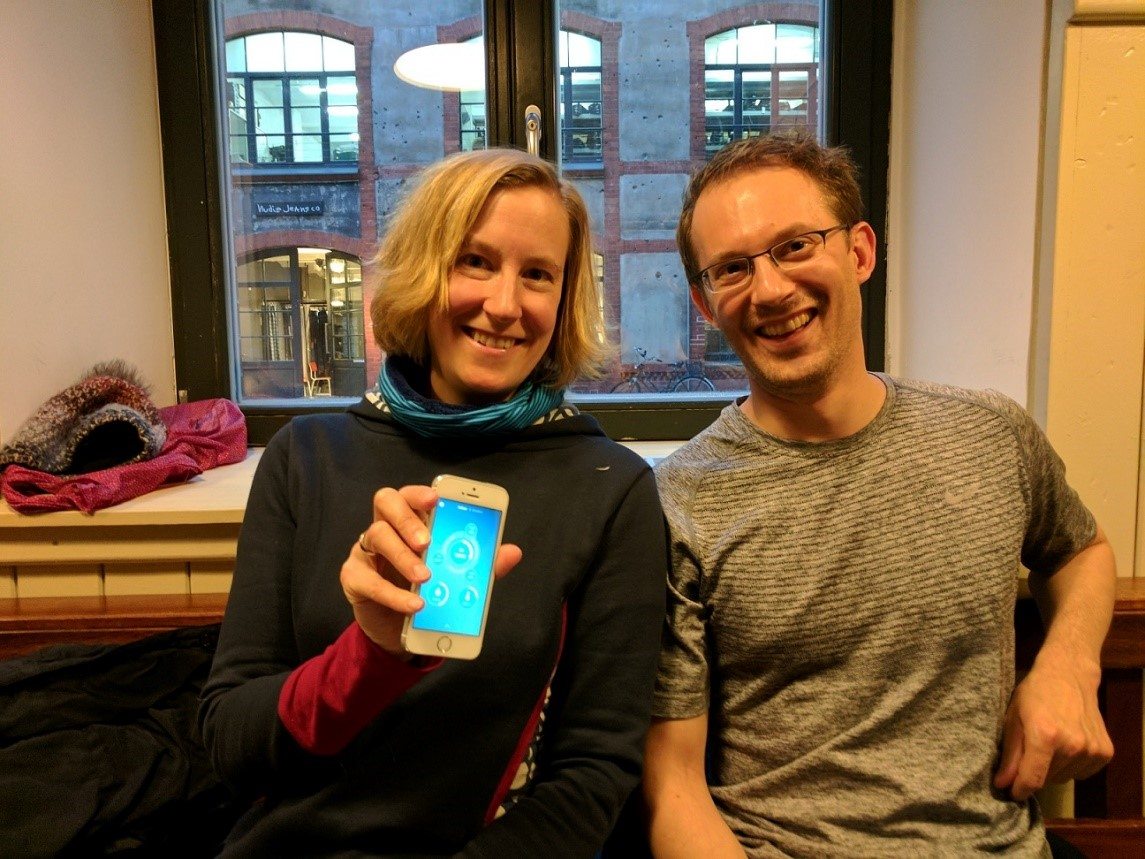How Trifacta’s European head of R&D Lars Grammel Used Foobot to Treat his Wife’s Asthma Attacks

“It was the best day of my life,” Sigrid laughed. “I finally knew the cause of my breathing problems.”
She spoke of the day she was diagnosed with asthma.
Before that day, when she would get an attack, she didn’t know how bad it would get because she didn’t know what was going on. Now she knew it wasn’t something that could kill her. “I was relieved to receive a spray that minimizes my breathing troubles.”
Her husband Lars nodded. He had watched helplessly as she suffered through two different asthma attacks, both from the comfort of their own home.
They happened when they lived in Vancouver, and doctors were stumped: it was obviously a respiratory issue, but it wasn’t allergies, and Vancouver had very little air pollution. Without the help of doctors, they had to rely on themselves for answers.
But knowing that she spends much more time in the house than outside, they wondered if the pollution could be coming from something inside the house itself. First, they thought it was their carpet, but they were removing it. Next, they thought it was their bed frame, but moving it didn’t have an effect.
Finally, they figured out it was their new hardwood floor. The installation threw up sawdust and other particles, while the lacquer and sealants let out harmful fumes that lingered for weeks, causing Sigrid to have trouble breathing on a nightly basis. Once they settled, her problems went away. Indeed, it was air pollution hurting Sigrid—just not the kind doctors were thinking about.
It wasn’t until the pair moved to Berlin that her problem reared its ugly head once again. Unlike Vancouver, Berlin has many issues with outdoor air pollution. Moreover, their home was near the street, and a coal power plant was nearby. More attacks led to more doctor visits and, finally, her diagnosis with asthma.
It turned her big question into a series of small ones. Asthma isn’t solved with a pill, but by managing the air you breathe from moment to moment. The problem didn’t become what do I do, but rather, what do I do now? This evening? Tomorrow morning? How would she know when fumes from the street spilled into the window, except to guess? How would she know when something unusual came and polluted her air, except to wait for an asthma attack?
That’s where her husband Lars came in.
“He’s the one who makes things happen,” Sigrid explained. He’s the European head of R&D at Trifacta, a software company for big data analysis. He used his background in research and analysis to learn everything he could about asthma and air quality. And to understand the air that his wife was breathing, he chose Foobot.
From the start, Lars knew managing the air in their home was a tricky issue. When the windows were tight, Volatile Organic Compounds (VOCs) would increase from various household tasks, like cooking, cleaning and even human breathing and metabolism.
But when they opened the windows is when Berlin’s pollution took its toll, with Particulate Matter (PM10 for larger particles, PM 2.5 for tiny ones) coming in from traffic, the coal plant and many other sources. Keeping his wife healthy meant a balancing act of knowing when to bring in or shut out air from the outside, along with managing the many complex factors going on inside their home.
With Foobot, Lars could see the instant that either VOCs or PMs got bad. They could open or close the window, and make sure that their air purifier (which has a low-quality PM10 sensor) was performing adequately or needed to be set to High.
“Now we have figures, we have evidence, we can see in black and white what we need to do,” Sigrid explained.
Moreover, by connecting Foobot with IFTTT, Lars could log all Foobot’s data into a Google Docs spreadsheet. That let him apply his professional data analysis skills to helping his wife. With a combination of Trifacta’s software and his own keen eye, Lars sorted and analyzed the data, finding correlations that pointed to steps he could take to improve things. One direct change he made from this was leaving a window open in the bathroom at night—the data revealed the effect it had on air flow made a positive change in their bedroom’s air quality.
It also helped settle an argument. One night, Sigrid woke up unable to breathe after months without an attack. She looked out the balcony, and saw that her downstairs neighbor was smoking just below, and the fumes were rising into her window. She explained he had to stop, that it was polluting her home and hurting her health. He got defensive, and said that there was no way the fumes were entering the house.
So, she pulled out her Foobot app, bright orange from the VOCs and PM2.5s of a lit cigarette. “I have evidence!” she said. “I have a Foobot. If you want to challenge me, I have proof to show that you’re wrong.” Their neighbor’s fumes stopped being a problem after that.
Another time, Foobot caught a perpetrator from a totally unexpected place. Lars enjoys biking, and bought a rubber mat to go under his bike indoors. It smelled rubbery, as expected. But Foobot smelled it too – it was emitting large amounts of VOCs, so the two knew to throw it out before it started giving Sigrid issues.
Asthma is always a rough ride for the 241 million people who live with it. Sigrid can’t get a cure for her condition, but with months since her last attack, Sigrid’s life is hardly different from anyone else’s. She has some mighty tools to get her what she needs: a great attitude to keep her fighting, a caring husband to find solutions, and a diligent Foobot to give them answers.